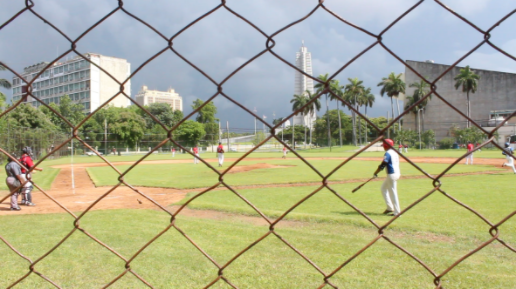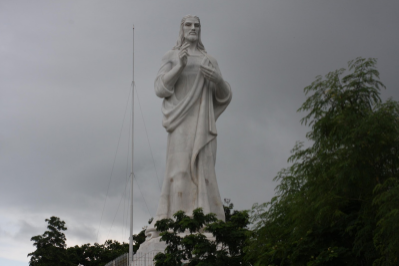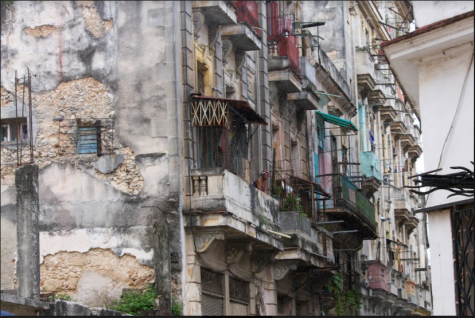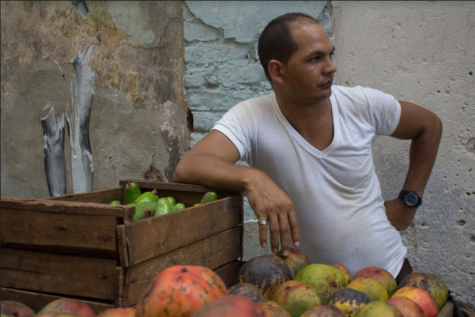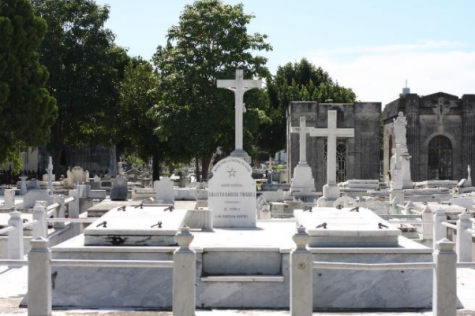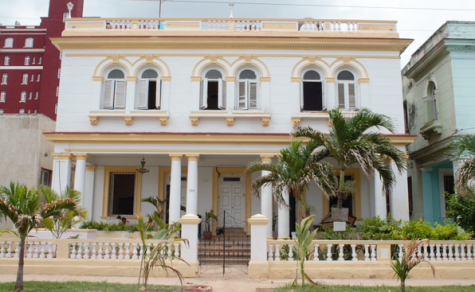Cameron Stover
Currency Conundrum
I visited Santa Maria beach with a few students on the third day of my Cuba experience. The water was a beautiful blue color and the Cuban culture was evident across the white sand. There were groups of Cubans congregated around a few musical instruments and dancing in unison.
When it came time for lunch, the currency conversion became an issue. The food stand was accepting payments in Moneda Nacional and I only had CUC to pay with. I miscalculated the conversion and it only became more complicated by the language barrier between the vendor and me. He allowed me to pay for the chicken and rice with CUC but could only give me change in Moneda Nacional. I attempted to argue that returning change amount in change, but he shook his head and gave me the Moneda Nacional.
When the transaction was over, I was unsure if he understood what I was saying or if I misunderstood him. The transaction happened quickly and there was a large line so I felt pressured to get out of the way and keep the line moving.
The two different currencies in Cuba, CUC and Moneda Nacional, have different values that make transactions confusing if you aren’t keen to the conversion. One CUC equals 25 MN, but completing these transactions in real time can be difficult and deceiving.
The locals can take advantage of tourists who don’t understand the conversion between Moneda Nacional and CUC. Menus tend to show the price in both CUC and MN. But in many cases, there is only one form of currency listed, leaving you to do some quick math in your head. This is where some locals capitalize on the confusion and come away with more money than they should. For example, the same drink was ordered three times at different periods of the night at a local club. Each order was priced differently, despite being an identical product.
In a country that has very limited credit card accessibility, it is imperative that you manage your money correctly to get the most out of your Cuban excursion. If you run out of cash while in the country, there are few options to replenish your spending money and it is best to avoid the situation altogether. Don’t be lazy and let the seemingly complicated math and fast-paced transactions discourage you from getting value for your currency.
*According to Real Havana, the Cuban government plans to end the dual currency system and merge the CUC and Moneda Nacional. However, there is no timetable set for the merge to occur.
A unifying passion
Everyone knows the Cubans passion for baseball runs deep in the entire country. We wanted to find a location where locals debate about the sport so we could ask them why baseball is so prominent in the country. We were pointed to Parque Central, a popular open plaza in the middle of Havana where locals convene to rest in the shade and converse.
When we visited Parque Central, there was a lot of activity bustling around us. Men and women were congregated in groups enjoying the weather and discussing whatever they pleased. There were Cuban and Dominican soldiers doing a ceremony in front of the Jose Marti status that overlooks the plaza.
The most distinct and boisterous group of people were in a circle passionately discussing baseball. We approached them with cameras and asked if they would like to be on camera and explain why they love the game so much. At first, they appeared hesitant to open up to us because of the cameras. But as one person broke the ice and gave us an interview, the rest of the Cubans eagerly lined up to speak.
Our production team gave each individual a chance to make their opinion heard about the nation’s sport. The locals about their favorite players with admiration and knowledge. We told them to act as though they were speaking directly to their idols, and they spoke with such emotion that we could tell baseball is like religion to these people.
We weren’t sure how to ask them political questions about Cuban peloteros defecting to the United States, but they were more than happy to open up about their feelings on the matter. They all agreed that it was excellent for the homegrown talent to gain recognition and money by going to the U.S., but it makes them sad every time a player leaves them.
It was an amazing experience to hear from the crazed fans first-hand about baseball’s power to bring people together. While the Cuban people all had differentiating opinions about what is the most important aspect of baseball, one thing was clear: Everyone feels a unique emotional attachment to the game that they love.
Baseball in Cuba
My production team went to a local field in Havana to get some footage of baseball players in their element. However, we were stopped by a lady who said it was not possible for us to film because of the revolution. She was nice enough to walk us right onto the field and told us we could sit in the bleachers for one hour. We were thinking of ways we could get any type of footage at this beautiful location right on the Malecon.
The players were all warming up right in front of our production team, each wearing their favorite MLB hat to beat the sweltering heat. At first, we thought we would be able to compete with these players. It was easier said than done.
To our childish excitement, one of the players asked us if we wanted to join in. We all jumped up eagerly at the opportunity to play baseball in Cuba with real Cuban people. One man handed me a bat and began tossing the ball to me so I could get my swing up to speed. I missed the first few and was really embarrassed.
Eventually, I began making contact and I could feel the connection being made with the locals because we were both smiling. While there was a language barrier, we were communicating through baseball. It was one of the most exciting moments of my life. The ability to understand each other through a sport was incredibly powerful, especially since Cubans treat baseball like a religion.
I never hit the ball out of the infield, but I did manage to reach base a few times. On defense, they placed me in the outfield and they may have regretted it. I made a few mistakes but they just smiled and tried to teach me how to improve my technique.
I didn’t have any baseball gear with me but the locals were happy to give up a glove to allow me to participate. Their generosity was something that most likely wouldn’t happen in the United States. Nobody was there to show off, rather it was a community of people coming together to play a game by any means necessary.
A thunderstorm was on the horizon and after three innings the whole group was sprinting off the field to dodge the downpour. We were terrified that our production equipment would get soaked so we sprinted away, covering the equipment with our shirts and bodies. We hailed a taxi cab home and couldn’t stop talking about what a bucket list moment it was for everyone. Needless to say, we will be going back on Sunday.
The game with Towering Power
We arranged a meeting with our translator, Mario, to show us the best local spots to watch baseball. He walked us around Havana in search of some live action. It was a hot, sweltering day and we had to carry our equipment all around the city. We managed to find a baseball field right next to the Plaza de Revolucion, a towering statue tribute to Cuba’s hero Jose Marti.
When we arrived at the field, some of the players grabbed us chairs and placed them in the shade. They welcomed us in and seemed eager to be shown on camera. I could tell they put a little extra into everything they were doing in order to look good.
Everywhere I have gone on this trip, the people have been quite accommodating. The politics of not being able to film in certain venues is understandable, but even in those instances, the people have been very nice.
There was an American team playing the Cubans in a friendly game. The players were 17 years old or under and the differences between the two teams were obvious. The American dugout was lined with several bats and helmets which showed the wealth and resource available to baseball players in the United States. The Cuban dugout had two bats outside and their players were wearing different hats and some weren’t even wearing jerseys.
One of the Cuban coaches was Lazador De La Torre, who used to be a famous pitcher in Cuba. I could tell from his physical stature and the way he carried himself. He is also one of the only Cubans I have seen wearing a nice watch. He agreed to interview with us after the game and allowed the Cuban players to speak to us as well. Up to this point, we had little success getting interviews with authentic Cuban athletes.
During the game, we spoke with several of the American players’ parents and got their take on what it meant to be in Cuba watching baseball. Many of them grew up during the Cuban Missile Crisis and didn’t think they would ever set foot in the country. Everyone had positive things to say about their stay in Cuba, as the baseball trip also probably doubled as a vacation for them.


